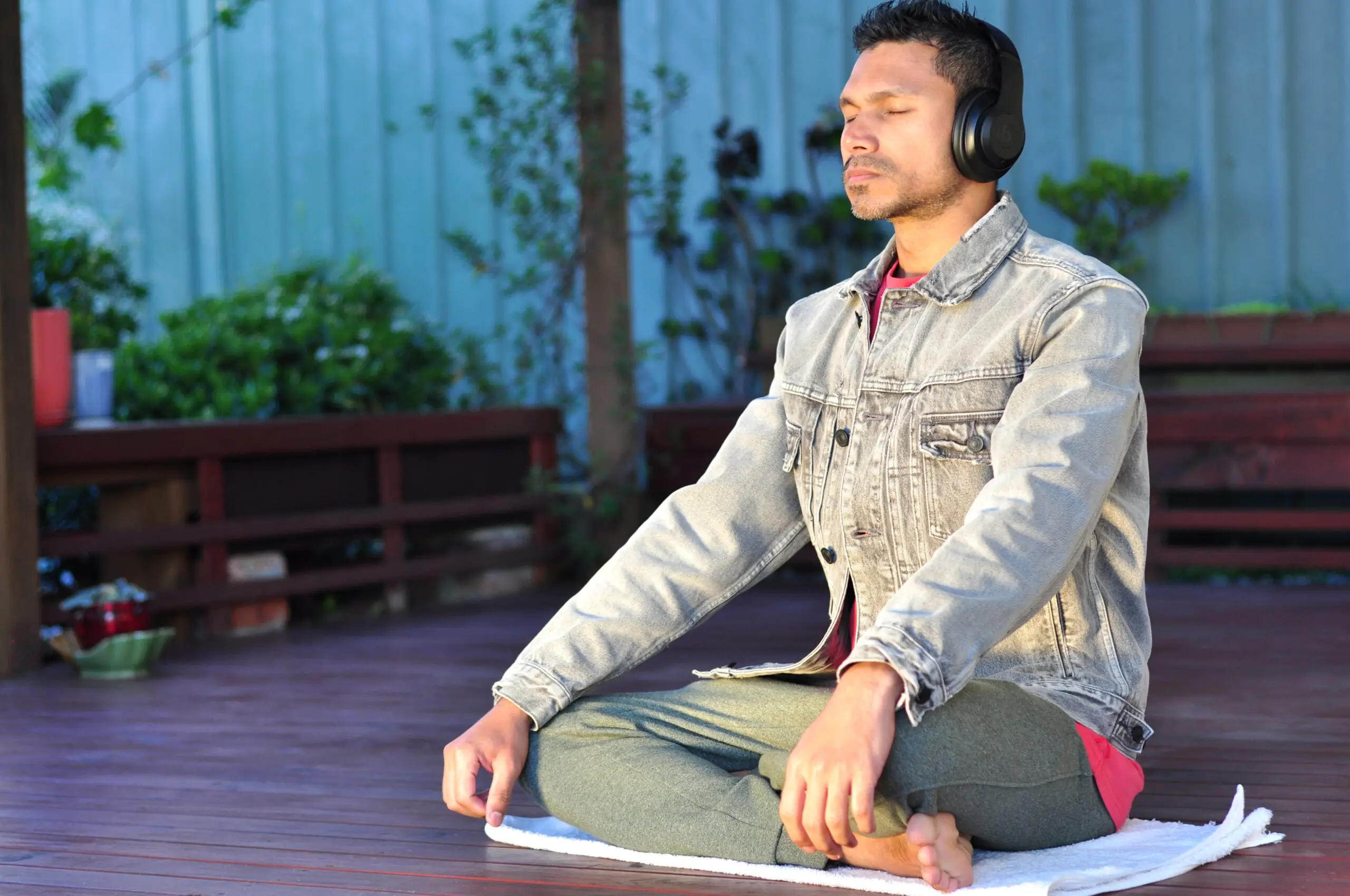5 Best Deep Breathing Exercises for Anxiety
Introduction
Anxiety disorders affect millions of people worldwide and can be debilitating. Anxiety symptoms can range from mild to severe, including worry, fear, panic attacks, and physical symptoms such as sweating and heart palpitations. While there are several ways to manage anxiety, deep breathing exercises are one of the most effective methods. This article will discuss the best deep breathing exercises for anxiety disorders that you can practice at home.
The History and Origins of Deep Breathing
Deep breathing exercises have been practiced for thousands of years in various cultures around the world. The ancient Indian practice of yoga, for example, has a long history of incorporating deep breathing techniques into its practice. The term “pranayama” refers to the practice of controlling one’s breath, and it is a core component of yoga.
Deep breathing exercises were also popularized in the West in the early 20th century by a Danish physician named Oskar Minkowski. Minkowski developed a deep breathing technique called “autogenic training,” which he used to treat patients with various health conditions, including anxiety.
Today, deep breathing exercises are widely used in various forms of therapy, including cognitive-behavioral therapy and mindfulness-based stress reduction. They are also commonly recommended as a self-care practice for managing anxiety and stress.
The Forest Visualization Exercise: Mindful Visualization for Anxiety Relief
How Deep Breathing Exercises Work
Before we dive into the best deep breathing exercises for anxiety disorders, let’s first understand how they work. When we’re anxious or stressed, our breathing pattern changes. We tend to take shallow and rapid breaths, which can trigger the body’s stress response, leading to physical symptoms such as increased heart rate, sweating, and muscle tension. Deep breathing exercises work by reversing this pattern. By taking slow, deep breaths, we can activate the parasympathetic nervous system, which is responsible for the body’s relaxation response. This, in turn, can help reduce anxiety symptoms and promote a sense of calm.
The Best Deep Breathing Exercises for Anxiety Disorders
1. Diaphragmatic Breathing
Also known as belly breathing, diaphragmatic breathing is one of the most effective deep breathing exercises for anxiety disorders. It involves taking slow, deep breaths into your belly rather than your chest. Here’s how to do it:
-
-
- Sit or lie down in a comfortable position.
- Place one hand on your belly and the other hand on your chest.
- Inhale slowly through your nose, feeling your belly expand. Make sure your chest stays still.
- Exhale slowly through your mouth, feeling your belly fall. You can use your hand to push your belly inwards gently.
- Repeat for several minutes, focusing on your breath and the sensation of your belly rising and falling.
-
2. Box Breathing
Box breathing is another effective deep breathing exercise for anxiety disorders. It involves inhaling, holding, exhaling, and holding your breath for a set amount of time, creating a “box” shape with your breath. Here’s how to do it:
-
-
- Sit or stand in a comfortable position.
- Inhale slowly through your nose for four seconds, feeling your belly and chest expand.
- Hold your breath for four seconds.
- Exhale slowly through your mouth for four seconds, feeling your belly and chest fall.
- Hold your breath for four seconds.
- Repeat for several minutes, focusing on your breath and the sensation of your belly and chest rising and falling.
-
3. 4-7-8 Breathing
4-7-8 breathing, also known as the relaxing breath, is a deep breathing exercise that can help reduce anxiety symptoms and promote relaxation. It involves inhaling for four seconds, holding for seven seconds, and exhaling for eight seconds. Here’s how to do it:
-
-
- Sit or lie down in a comfortable position.
- Place the tip of your tongue behind your upper front teeth, resting it there throughout the exercise.
- Inhale slowly through your nose for four seconds.
- Hold your breath for seven seconds.
- Exhale slowly through your mouth for eight seconds, making a whooshing sound.
- Repeat for several minutes, focusing on your breath and the sensation of your belly and chest rising and falling.
-
4. Alternate Nostril Breathing
Alternate nostril breathing is a yogic breathing technique that can help balance the body’s energy and promote relaxation. It involves breathing through one nostril at a time. Here’s how to do it:
-
-
- Sit in a comfortable position with your back straight and your eyes closed.
- Place your right thumb over your right nostril and inhale through your left nostril for four seconds.
- Close your left nostril with your ring finger and hold your breath for four seconds.
- Release your right nostril and exhale through it for four seconds.
- Inhale through your right nostril for four seconds.
- Close your right nostril with your thumb and hold your breath for four seconds.
- Release your left nostril and exhale through it for four seconds.
- Repeat for several minutes, focusing on your breath and the sensation of air flowing through your nostrils.
-
5. Progressive Muscle Relaxation
Progressive muscle relaxation is a deep breathing exercise that combines breathing with muscle relaxation. It involves tensing and relaxing different muscle groups in the body, promoting a sense of relaxation and reducing anxiety symptoms. Here’s how to do it:
-
-
- Sit or lie down in a comfortable position.
- Close your eyes and take a few deep breaths.
- Tense the muscles in your feet and hold for five seconds.
- Release the tension and feel the relaxation for five seconds.
- Move to the muscles in your calves and repeat the tension-release cycle.
- Work your way up to your thighs, stomach, chest, arms, neck, and face, tensing and releasing each muscle group for five seconds.
- Take a few deep breaths and enjoy the sensation of relaxation in your body.
-
FAQs about Deep Breathing Exercises for Anxiety
How often should I practice deep breathing exercises for anxiety disorders?
You can practice deep breathing exercises as often as you’d like, but it’s recommended to practice them at least once a day, preferably in a quiet and peaceful environment.
How long should I practice deep breathing exercises for anxiety disorders?
It’s recommended to practice deep breathing exercises for at least 5-10 minutes each session. However, you can practice them for longer if you’d like.
Can deep breathing exercises replace the medication for anxiety disorders?
While deep breathing exercises can be effective in reducing anxiety symptoms, they are not a substitute for medication. If you have an anxiety disorder, it’s important to consult with a healthcare professional to determine the best treatment plan for you.
Understanding and Managing Panic Attacks
Conclusion
In conclusion, deep breathing exercises can be powerful in managing anxiety disorders. By practicing the best deep breathing exercises for anxiety disorders, such as diaphragmatic breathing, box breathing, 4-7-8 breathing, alternate nostril breathing, and progressive muscle relaxation, you can take control of your anxiety and improve your overall well-being.
Remember to practice deep breathing exercises regularly, preferably in a quiet and peaceful environment, and seek help from a qualified healthcare professional if you have an anxiety disorder. Also, don’t forget to check out the helpful resources listed below for more information and support.
Thank you for reading, and we hope this article has provided you with valuable information and tools to help manage your anxiety. Remember, you are not alone, and there are resources available to help you on your journey toward a healthier and happier life.
Gratitude
Thank you for taking the time to read this article on the best deep breathing exercises for anxiety disorders. We hope you found the information helpful and informative. If you have any comments, suggestions, or would like to share your experience with deep breathing exercises, we would love to hear from you. Please leave a comment below and let us know what you think.
Also, if you found this article helpful, please like and share it with your friends and family. Deep breathing exercises can be a powerful tool in managing anxiety, and by sharing this article, you may be helping someone else who is struggling with anxiety.
Thank you again for reading, and we wish you all the best on your journey toward managing anxiety.
Helpful Resources for Anxiety Disorders
If you or someone you know is struggling with an anxiety disorder, there are several helpful resources available. Here are some links to authoritative websites that can provide you with more information and support:
-
-
- National Institute of Mental Health (NIMH): NIMH is a leading authority on mental health and provides information on various anxiety disorders, treatment options, and research studies.
- Anxiety and Depression Association of America (ADAA): ADAA is a nonprofit organization that provides resources, support, and treatment options for individuals with anxiety disorders and related conditions.
- National Alliance on Mental Illness (NAMI): NAMI is a grassroots organization that provides education, support, and advocacy for individuals with mental illness and their families.
- Calm Clinic: Calm Clinic is an online resource that provides information and treatment options for anxiety disorders, including social anxiety, panic attacks, and generalized anxiety disorder.
- Psychology Today: Psychology Today is a website that provides information on mental health conditions, treatment options, and resources. It also has a directory of mental health professionals that you can search by location and specialty.
-
Remember, if you are struggling with an anxiety disorder, it’s important to seek help from a qualified healthcare professional. These resources can provide you with information and support, but they should not replace medical advice or treatment.








